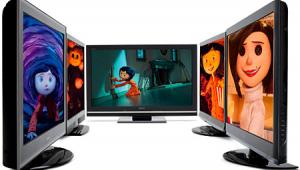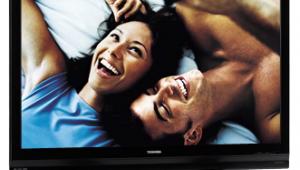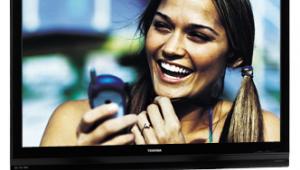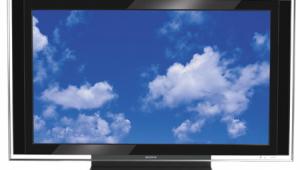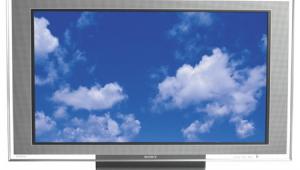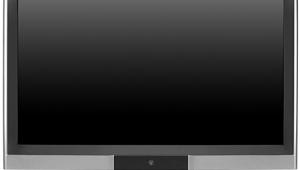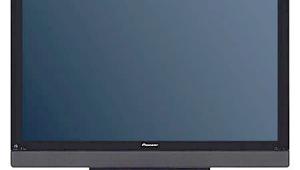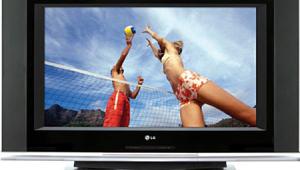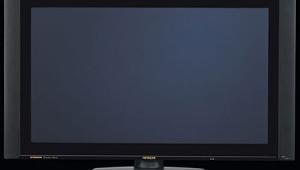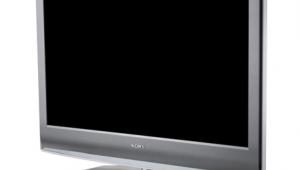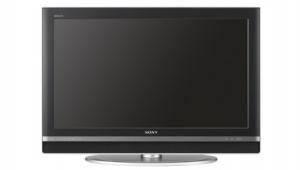Face Off at the HDTV Corral
Panasonic VIERA TH-50PZ800U Plasma HDTV Review and Comments
Pioneer Elite KURO PRO-111FD Plasma HDTV Review and Comments
Samsung LN55A950 LCD HDTV Review and Comments
Sony BRAVIA KDL-55XBR8 LCD HDTV Review and Comments
Traditions are front and center this time of year: The tinsel and lights will have been put away by the time you read this, and the new year will have rung in. Nevertheless, Super Bowl Sunday and March Madness are fast approaching. As is the February 2009 transition to digital-only broadcasting. Even in these dicey economic times, many of you will want to update your cranky old CRT set or even your three-year-old rear-projection model, hoping that the change will bring you to video nirvana. This brings us to another grand tradition: Home Theater’s annual HDTV Face Off.
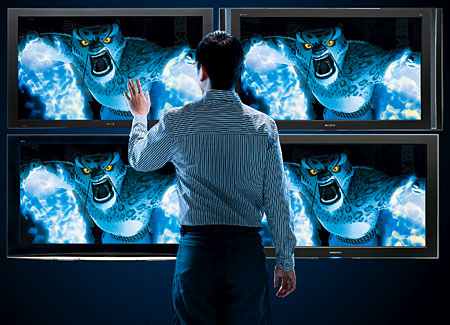
We held our bake-off in early November. As the pastry chef, it was my job to mix the test ingredients in a way that was as fair and revealing as possible. This was my first crack at setting up a HDTV Face Off for Home Theater, but it wasn’t my first attempt at organizing such an event. Back in the 1990s, I ran a number of loudspeaker panel tests as the tech editor of Stereophile magazine. So I was well aware of the issues and pitfalls involved in running a blind comparison with multiple products and multiple judges.
The Candidates
This year, we restricted the test to four high-end designs, which made this more of a “best of the best” than a typical Face Off. This approach was inspired by previous individual reviews. We found these particular plasmas and local-dimming LCDs to be too superior in performance to other flat-panel sets currently on the market for a fair comparison. Also, while “Twelve Sets Compared” sounds splashy on a magazine cover, when fewer sets are involved, we can give more attention to each one in the process.
The candidates included two 50-inch plasmas and two 55-inch LCDs. Three of the four entrants are very pricey compared with most other sets on the market, but they promise the most up-to-date technology that their manufacturers offer. This includes standard-setting black levels on the Pioneer, LED local-dimming backlighting on the Samsung and Sony, and THX certification on the Panasonic (the most affordable set in the group, which makes it a test case for how a less expensive set might stack up in the company of credit card busters).
The Panel
The panel consisted of Shane Buettner, editor of Home Theater; Claire Lloyd, Home Theater’s executive editor; Home Theater contributors Michael J. Nelson and Barb Gonzalez; and Scott Wilkinson, editor of our online sister publication, Ultimate AV. This created a nice balance of perspective between video tweaks like Scott and Shane and more casual viewers like Mike and Claire. Barb, as our resident self-styled “Simple Tech Guru,” fits comfortably in between. A longstanding distinction of the Face Off has been giving a voice to the less techie among us. And the tradition holds here, perhaps casting a different light on the sets featured here that have already been reviewed.
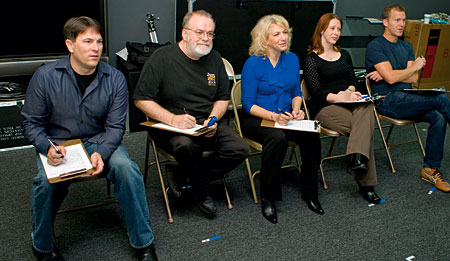
As the test’s show runner and disc jockey, I had extensive knowledge of each set (two of which I have already reviewed separately) and also knew which display was which, so I did not act as a judge.
The Venue and Setup
I arranged the four sets in a row, with the 55-inch sets in the middle and the 50-inch sets on the outside (angled in very slightly). I positioned the viewing seats at a distance of about four screen heights from the sets. All of the seats were in the same row, which put them a little further from the angled 50-inch models, but the angling of the latter helped compensate for the difference.
I encouraged the judges to swap seats frequently, to judge both on-axis and off-axis performance, and all did so. They also had the opportunity to sit closer or further away. No one chose to sit closer, but most of the judges checked out the sets from further away several times during the test.
All of the sets were driven via HDMI during the panel testing. The technical measurements presented here are generally limited to HDMI as well, except for the 480i-to-1080p processing (over component video) and otherwise as noted.
I used two Panasonic Blu-ray players for the tests, a DMP-BD35 and a DMP-BD55 (reviewed in the December 2008 issue). Both of these players offer identical video performance. They only differ in the DMP-BD55’s multichannel analog outputs. The sources ran through a four-in/eight-out HDMI switcher-splitter from Accell. All of the HDMI cables were from UltraLink, with 2-meter runs from the source to the switcher-splitter and an additional 5-meter length from the switcher-splitter to each set. One of the sets (the Pioneer) showed some subtle HDMI artifacts (white flecks) when I attempted to pass 1080p/60 through this chain. The Panasonic’s picture also flickered badly when only it and the Sony were turned on (the Sony did not flicker). This flicker disappeared when I disconnected the HDMI lead from the Sony or turned on all the sets. But the setup worked flawlessly with all the sets on in all the resolutions I used in the test, including 1080p/24.
The tests took place over a single day in early November. The venue was completely finished (walls, ceilings, and floor) in a deep, neutral gray. For the morning tests, the judges evaluated the sets in total darkness. For the afternoon session, we used four identical D6500 Ideal-Lume Standard fluorescent backlights from CinemaQuest.
